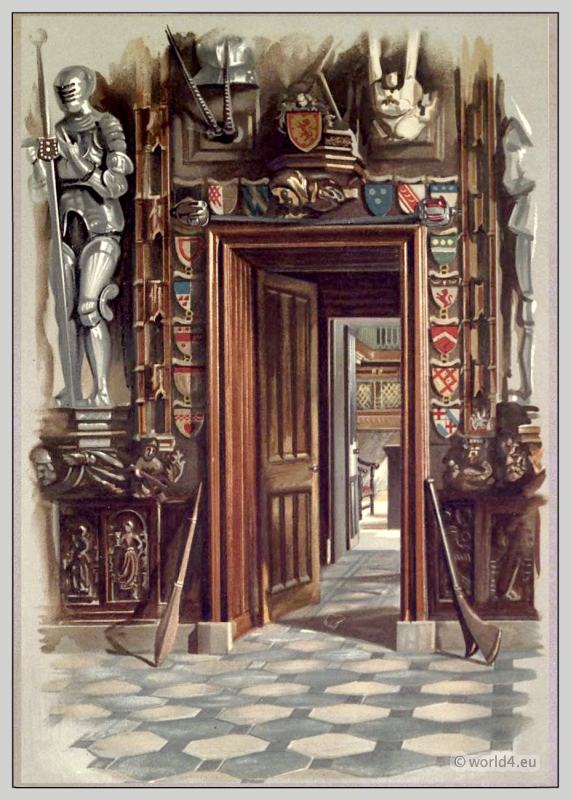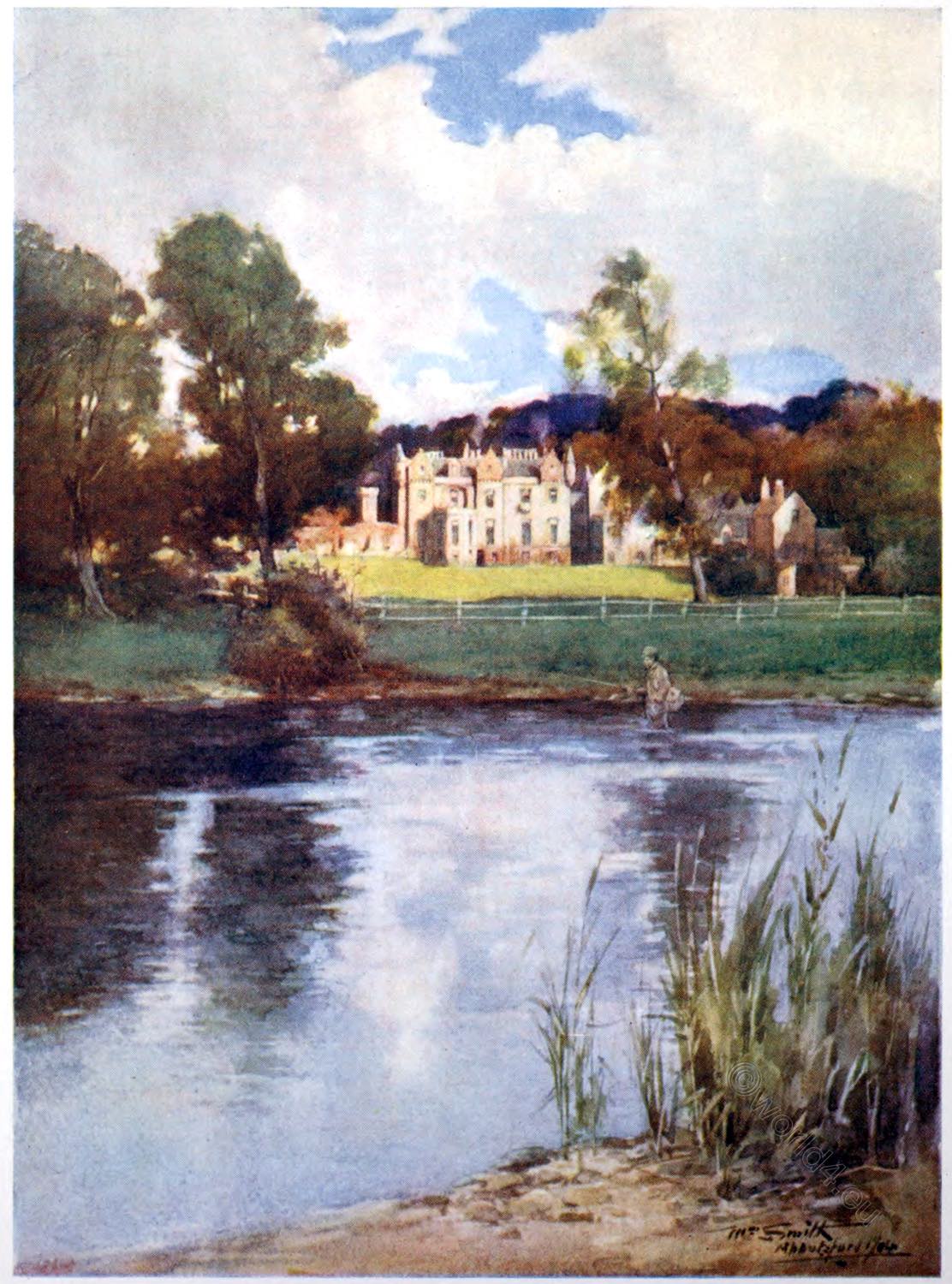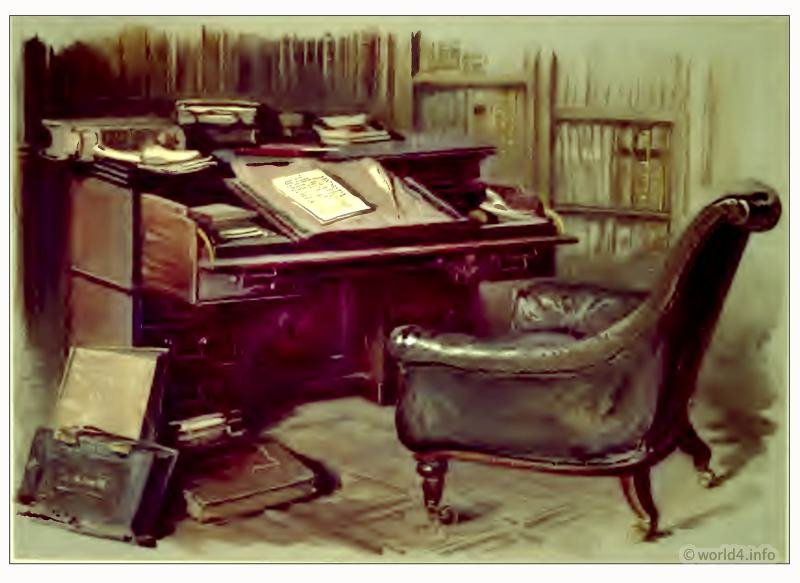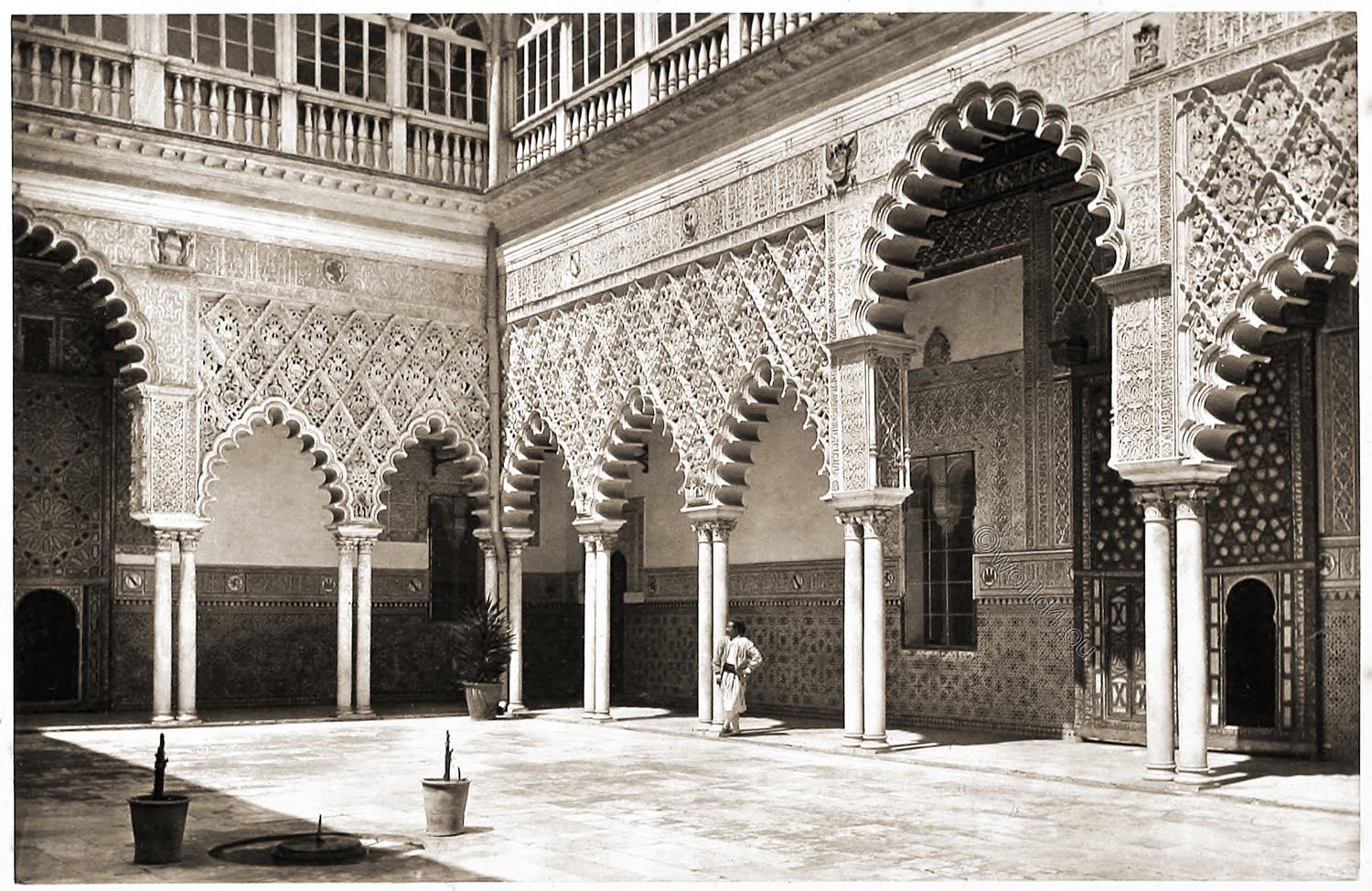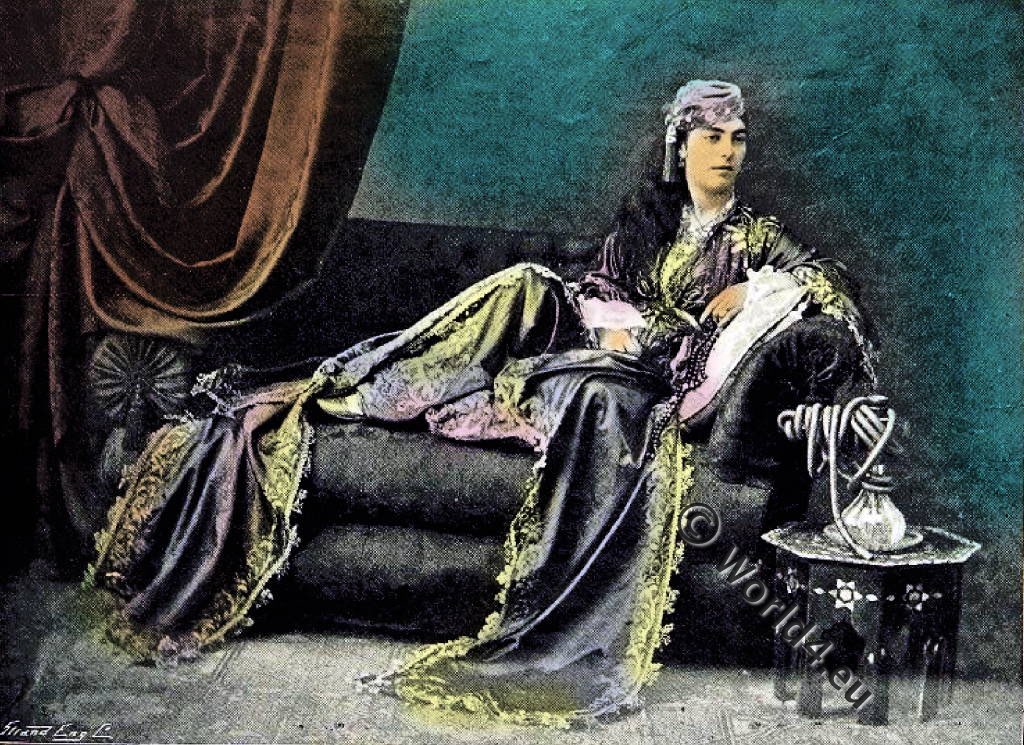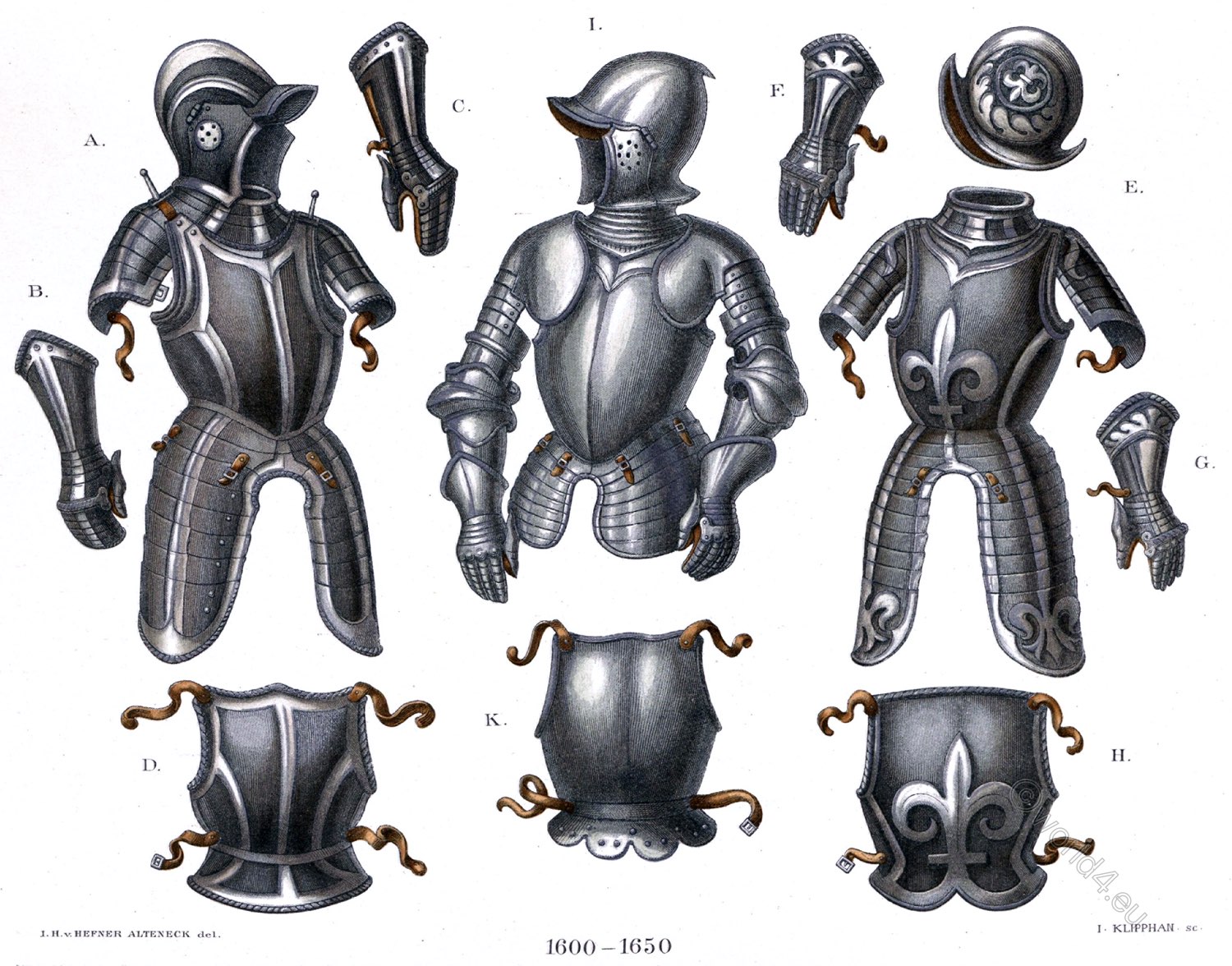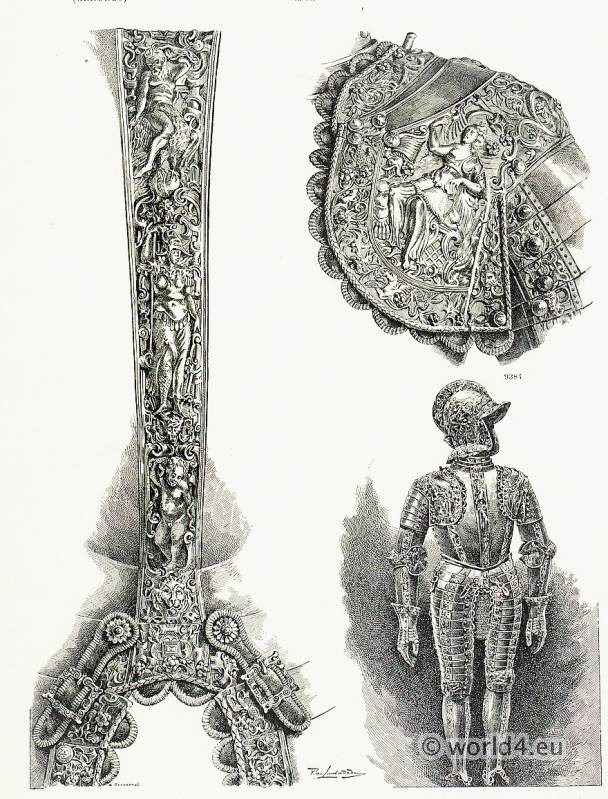Abbotsford hall door. A complete suit of feudal steel armour.
HALL DOOR LOOKING TOWARDS STUDY AND SHOWING CORNER OF DESK.
IN the Reliquia Sir Walter thus describes this end of the hall: “The eastern end of this room is fashioned into two niches, modelled in Paris plaster from those splendid sculptured niches which formerly held the Saints and Apostles of the Abbey of Melrose. These niches are each of them occupied by what is very rarely seen in Scotland, namely a complete suit of feudal steel armour (The suit of armour is 6 ft. in height, the sword 6 ft. 7 in. in length, the blade 3 in. broad, the grip 20 in. The helmet measures 31 in. round at widest part).
In the hands of the figure to the left is placed “a sword nearly six feet in length, and wielded with both hands. This we must consider as the gladius militis levis armatura*, or the sword of the light-armed soldier. It was with such weapons that men in old times fought at barriers or passes, in the natural straits of a mountainous country, or upon the breach of a defended castle. They are found mentioned in the wars of Switzerland, and in the feuds of the Scottish clans.
The Scottish poet Barbour gives a most interesting account of the successful defence made by his hero (Bruce) against the vassals of John of Lorn, three of whom, armed with these dreadful weapons, attacked the monarch at once after the rout of Dairy, and were all slain by him.
“Thai saw on syd thre men cummand, Lik to lycht men and wanerand; Swerdis thai had, and axys als.” (Barbour, The Bruce, Book v. verse 410.)
“There are several swords of the kind in my small collection . . . but none of them are like that placed in the grasp of the warrior of Bosworth, which, to speak the truth, may match even with the tremendous blade of the Castle of Otranto.” It was through these doors that Mr. Lockhart wheeled Sir Walter for his last visit to the study, so touchingly described in the Life.
These doorways are also connected with the story of Lord Byron’s supposed apparition to Sir Walter, soon after his death (August 1827). Those who have seen Abbotsford will remember that there is at the end of the hall, opposite to the entrance of the library, an arched doorway leading to other rooms. One night some of the party observed that, by an arrangement of light, easily to be imagined, a luminous space was formed upon the library door, in which the shadow of a person standing in the opposite archway made a very imposing appearance, the body of the hall remaining quite dark.
Sir Walter had some time before told his friends of the deception of sight (mentioned in his Demonology) which made him for a moment imagine a figure of Lord Byron standing in the same hall. We quote Sir Walter’s words “Not long after the death of a late illustrious poet who had filled, while living, a great station in the eye of the public, a literary friend, to whom the deceased had been well known, was engaged during the darkening twilight of an autumn evening in perusing one of the publications which professed to detail the habits and opinions of the distinguished individual who was now no more. As the reader had enjoyed the intimacy of the deceased to a considerable degree, he was deeply interested in the publication, which contained some particulars relating to himself and other friends.
A visitor was sitting in the apartment who was also engaged in reading. Their sitting-room opened into an entrance hall, rather fantastically fitted up with articles of armour, skins of wild animals, and the like. It was when laying down his book, and passing into this hall, through which the moon was beginning to shine, that the individual of whom I speak saw, right before him, and in a standing posture, the exact representation of his departed friend, whose recollection had been so strongly brought to his imagination. He stopped for a single moment, so as to notice the wonderful accuracy with which fancy had impressed upon the bodily eye the peculiarities of dress and posture of the illustrious poet.
Sensible, however, of the delusion, he felt no sentiment save that of wonder at the extraordinary accuracy of the resemblance, and stepped onwards towards the figure, which resolved itself, as he approached, into the various materials of which it was composed. These were merely a screen, occupied by great-coats, shawls, plaids, and such other articles as usually are found in a country entrance-hall. The spectator returned to the spot from which he had seen the illusion, and endeavoured with all his power to recall the image which had been so singularly vivid. But this was beyond his capacity; and the person who had witnessed the apparition, or, more properly, whose excited state had been the means of raising it, had only to return into the apartment, and tell his young friend under what a striking hallucination he had for a moment laboured.”
*) gladius militis levis armatura
Gladius = Roman short sword
Militis = Military
Levis = Early republican legionary
Armatura = Armament
Source: Abbotsford; the personal relics and antiquarian treasures of Sir Walter Scott. Illustrated by William Gibb. By Maxwell-Scott, Mary Monica. London A. and C. Black 1893.
Related
Discover more from World4 Costume Culture History
Subscribe to get the latest posts sent to your email.

